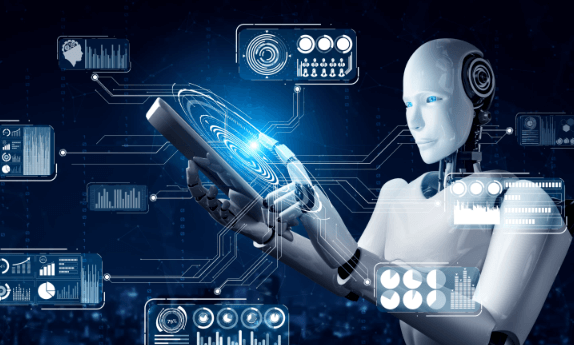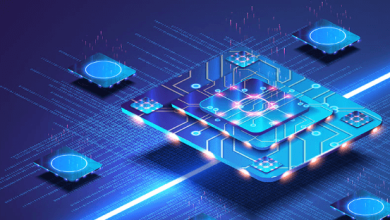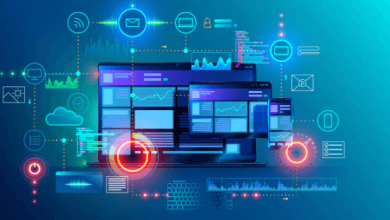Artificial Intelligence and Machine Learning (AI/ML): Transforming the Future of Technology

Introduction
Artificial Intelligence (AI) and Machine Learning (ML) are at the forefront of technological innovation, driving advancements across various industries and transforming the way we live and work. From automating complex tasks to making data-driven predictions, AI/ML technologies are reshaping the future of technology. This article provides an in-depth exploration of AI and ML, including their definitions, applications, challenges, and the future trends shaping this dynamic field.
Understanding Artificial Intelligence (AI)
Artificial Intelligence (AI) refers to the simulation of human intelligence in machines that are designed to think, learn, and solve problems autonomously. Artificial intelligence (AI) systems are capable of tasks like speech recognition, visual perception, language translation, and decision-making that traditionally need human intelligence.
See also: Automation in Healthcare: Revolutionizing Patient Care and Operational Efficiency
AI is broadly categorized into three types:
- Narrow AI: AI systems designed to perform a specific task, such as voice assistants or recommendation engines.
- General AI: Artificial intelligence that is theoretically capable of carrying out any intellectual work that a human can.
- Superintelligence: An AI that surpasses human intelligence across all fields, though this remains theoretical.
Key concepts in AI include algorithms, machine learning, neural networks, and natural language processing (NLP), all of which contribute to creating intelligent systems that can adapt and improve over time.
Introduction to Machine Learning (ML)
Machine Learning (ML) is a subset of AI that focuses on the development of algorithms that allow computers to learn from and make decisions based on data. Rather than being explicitly programmed to perform a task, ML systems use statistical methods to learn patterns in data and make predictions or decisions without human intervention.
Three primary categories of machine learning exist:
- Training a model on labeled data—where the right output is known—requires supervised learning.
- The model learns to map inputs to outputs and can then predict outcomes for new data.
- Unsupervised Learning: Deals with unlabeled data, where the model identifies patterns or groupings within the data without prior knowledge of what the output should be.
- Reinforcement Learning: A model learns by interacting with its environment, receiving rewards or penalties based on its actions, and optimizing its behavior to achieve the best possible outcome.
These types of learning are used to build models that can perform tasks ranging from image recognition to predictive analytics.
The Relationship Between AI and ML
Machine Learning is a critical component of Artificial Intelligence, providing the foundation for many AI applications. While AI encompasses a broad range of techniques aimed at mimicking human intelligence, ML specifically focuses on creating systems that can learn and adapt from data. In essence, ML is the engine that drives the capability of AI systems, enabling them to improve over time and handle increasingly complex tasks.
Historical Evolution of AI/ML
The development of AI/ML has been marked by several key milestones:
- 1950s-60s: Early AI research focused on symbolic AI and rule-based systems, with pioneers like Alan Turing and Marvin Minsky.
- 1980s-90s: The advent of machine learning algorithms, such as decision trees and neural networks, began to shift the focus towards data-driven AI.
- 2000s: The rise of big data and increased computational power fueled advancements in deep learning, a subset of ML that uses neural networks with many layers to model complex patterns.
- 2010s-Present: AI/ML technologies have matured, leading to widespread adoption in industries such as healthcare, finance, and retail, and the emergence of AI-driven applications like self-driving cars and voice assistants.
This historical progression has laid the groundwork for the powerful AI/ML systems we see today.
Core Components of AI/ML Systems
AI/ML systems rely on several core components to function effectively:
- Data: The fuel that drives AI/ML models, including structured data (e.g., databases) and unstructured data (e.g., images, text).
- Algorithms: Mathematical models and rules that process data and make predictions or decisions.
- Computational Power: High-performance computing resources, including GPUs and TPUs, necessary to train complex models, especially in deep learning.
- Model Training: The process of feeding data into an algorithm to develop a predictive model, followed by testing and refinement to ensure accuracy.
These components work together to create systems capable of learning from data and making intelligent decisions.
Key AI/ML Algorithms and Techniques
Several algorithms and techniques form the backbone of AI/ML development:
- Neural Networks: Inspired by the human brain, these networks consist of interconnected layers of nodes (neurons) that process data and learn patterns.
- Decision Trees: A model that splits data into branches to make decisions based on feature values.
- A supervised learning model for classification and regression applications is called Support Vector Machines (SVM).
- K-Means Clustering: An unsupervised learning algorithm that partitions data into clusters based on similarity.
These algorithms are applied across various domains, from image recognition to financial forecasting.
Applications of AI/ML in Various Industries
AI/ML technologies have a wide range of applications across industries:
- Healthcare: AI/ML is used in diagnostics, personalized medicine, drug discovery, and patient monitoring.
- Finance: Applications include fraud detection, algorithmic trading, risk assessment, and customer service automation.
- Retail: AI/ML powers recommendation engines, inventory management, and customer sentiment analysis.
- Manufacturing: Three important application areas are supply chain optimization, quality control, and predictive maintenance.
These examples illustrate the transformative potential of AI/ML in solving complex problems and driving innovation.
AI/ML in Natural Language Processing (NLP)
Natural Language Processing (NLP) is a subfield




